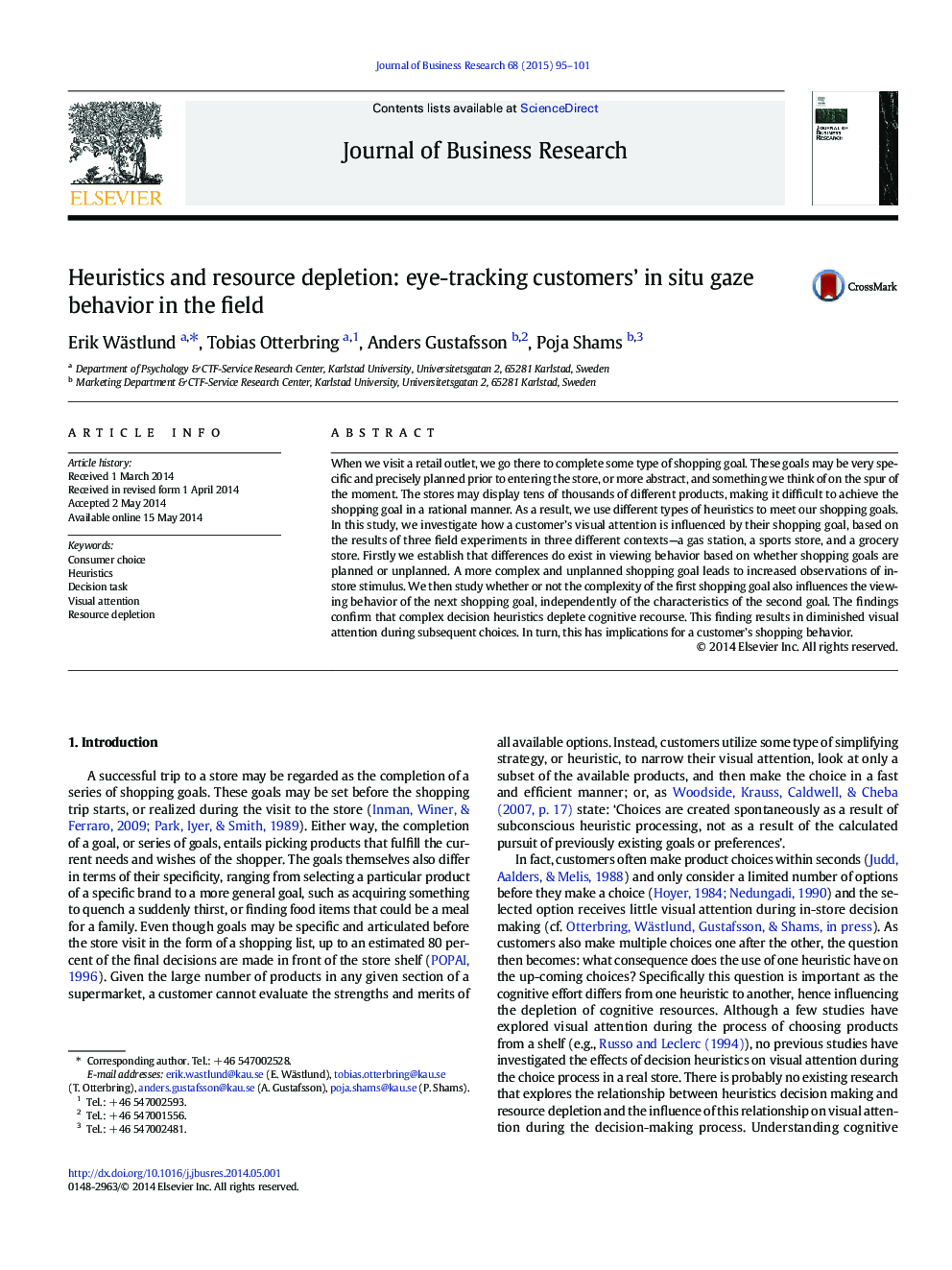| Article ID | Journal | Published Year | Pages | File Type |
|---|---|---|---|---|
| 1017314 | Journal of Business Research | 2015 | 7 Pages |
When we visit a retail outlet, we go there to complete some type of shopping goal. These goals may be very specific and precisely planned prior to entering the store, or more abstract, and something we think of on the spur of the moment. The stores may display tens of thousands of different products, making it difficult to achieve the shopping goal in a rational manner. As a result, we use different types of heuristics to meet our shopping goals. In this study, we investigate how a customer’s visual attention is influenced by their shopping goal, based on the results of three field experiments in three different contexts—a gas station, a sports store, and a grocery store. Firstly we establish that differences do exist in viewing behavior based on whether shopping goals are planned or unplanned. A more complex and unplanned shopping goal leads to increased observations of in-store stimulus. We then study whether or not the complexity of the first shopping goal also influences the viewing behavior of the next shopping goal, independently of the characteristics of the second goal. The findings confirm that complex decision heuristics deplete cognitive recourse. This finding results in diminished visual attention during subsequent choices. In turn, this has implications for a customer’s shopping behavior.
